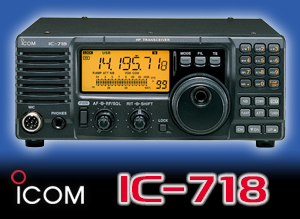Propagation News – 15 September 2024
Last week showed that HF conditions are improving as we head into the autumn.
With a solar flux index still above 200, there was plenty of DX available to work. CDXC members reported working VP6WR on the Pitcairn Islands, KH8T on American Samoa and 3D2USU on Fiji, which is not a bad catch for early September.
A little closer to home, 9A168TESLA in Croatia has been popping up for short periods celebrating the 168th anniversary of the birthday of electrical pioneer Nikola Tesla. Watch DX Summit closely for operating times.
The daylight maximum useable frequency, or MUF, over 3,000 kilometres remains above 28MHz on the whole, although a raised Kp index tends to reduce this.
Geomagnetic conditions remained relatively calm with the Kp index below 3 all week. That changed on Thursday 12 September as material from a coronal mass ejection, or CME, passed the ACE spacecraft in the early hours.
The solar wind speed increased to more than 500 kilometres per second and the Bz swung south. On Thursday 12 September, the Kp index was 5 and the Met Office Space Weather department was forecasting potentially unsettled conditions for this weekend, ending today the 15 September.
At the same time an X-class flare occurred, with lowered MUFs due to increased D-layer absorption.
Two large coronal holes on the Sun’s surface are also now Earth-facing and threaten to add to the solar wind this weekend.
According to NOAA’s predictions, the solar flux index should stay in the 210 to 225 range next week, although a large number of spots are about to rotate off the Sun’s visible disk.
This may be compensated by an active region that’s about to rotate into view. This has been emitting C-Class and lower-level M-flares and could potentially be the same region that produced a number of energetic eruptions off the far side of the Sun over the past week. Time will tell.
VHF and up
The heavy showers at the end of last week produced some good rain scatter, but no QSOs in the UK were noted due to the showers not coinciding with GHz contests and few suitable home stations were active to take advantage of them.
After a gradual build-up of pressure over this weekend, ending the 15 September, high pressure is suggested by most models during the coming week. However, there is some uncertainty about the position of the high.
Currently, models are favouring the north of Britain and this means that in the south, although still on the edge of high pressure, there could be a brisk northeasterly breeze, which may weaken the inversion prospects. It’s not clear if the Tropo will be functioning in time for the 70MHz Affiliated Societies Contest today, the 15 September, but should be helpful for the 1.3GHz UK Activity Contest on Tuesday 17 September and the 70MHz UK Activity Contest on Thursday 19 September.
Solar conditions are still likely to offer the chance of the occasional elevated Kp index, which is a good sign of possible aurora. It will be interesting to see how things evolve this weekend, ending the 15 September, as a series of expected CMEs are due to reach earth.
The amateur bands between 10m and 2m are the ones to check as well as looking out for ‘watery’ sounding signals on the HF bands. Remember it doesn’t have to be dark for radio aurora, so don’t wait for dusk before checking.
Meteor scatter is mainly down to random activity in the coming week. However, with the September Epsilon Perseids stream still active until the 21 September, having peaked on the 9 September, conditions may be slightly enhanced.
For EME operators, Moon declination is negative but rising and going positive again on Wednesday 18 September. Moon visibility windows will continue to rise while path losses decrease as we approach perigee on Wednesday 18 September. 144MHz sky noise is moderate for the whole of next week.
Category: GB2RS Propagation News










